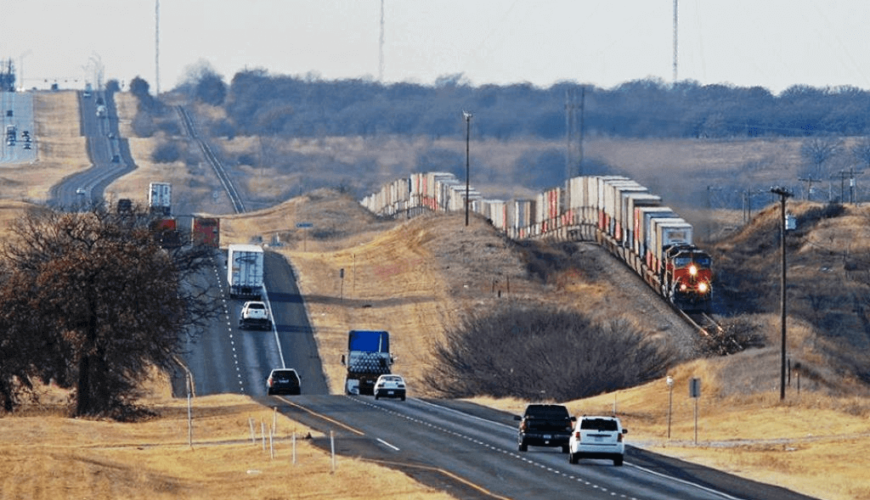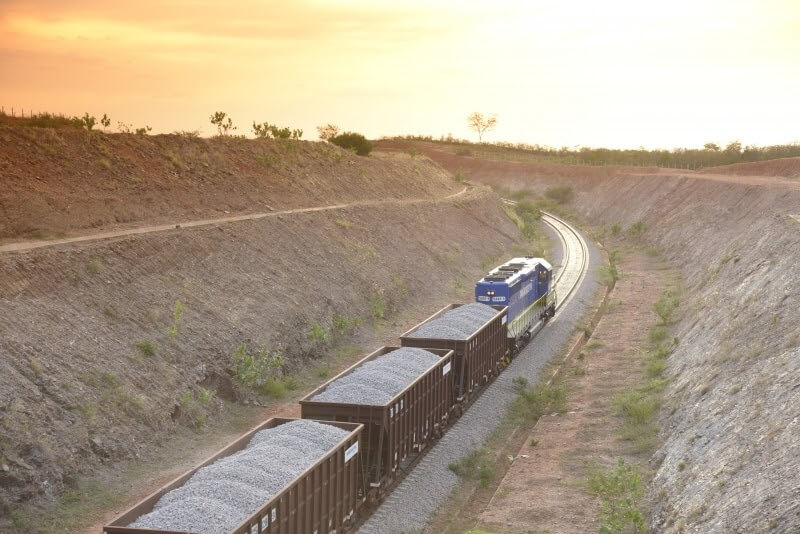
Brazilian logistics infrastructure: how it is and what should be improved
Cargo turnover, supply of states and municipalities, flow to ports and increased production are services totally dependent on the logistics infrastructure, mainly rail and road. Through the movement of trains and trucks, the items produced in the industries, the minerals extracted from the mines and any type of important element for the economy of the Brazilian regions reach their respective destinations.
But, for the transport to be effective, fast and can meet a great demand, it is essential that the logistics infrastructure is the best possible. Logistical infrastructure is the part responsible for several flow stages and is essential in several aspects, such as the situation of transport routes (highways and railroads), the quality of transport vehicles, the organization of routes, the types of loads that will be transported and more.
Brazil is a very large country, with more than 8 million km², being the fifth largest nation in the world in territorial extension. The country is divided into 26 states, plus the Federal District. In addition, there are five regions that house these states, separated according to their physical characteristics, location, climate and temperature.
Due to this enormous territorial extension, which increases the distance from one state to the other, the logistics infrastructure is even more important, although, at the same time, it presents difficulties in reaching the ideal model in Brazil. A good logistics infrastructure reduces difficulties related to long distances that need to be covered by transport vehicles.
Content Index
Increased competitiveness

As we said, the rail and road sectors are the main cargo transportation segments, nationally speaking. To better explain how the Logistics Infrastructure of these two sectors is currently doing, we need to talk a little about each one individually.
First, we will approach the road modal, which is the most used means of transport in Brazil, mainly in cargo transportation. According to recent data from the National Transport Confederation (CNT), more than 60% of cargo handled across the country passes through highways. This number shows the predominance of the sector in relation to the “competitor”, which makes it the main mode of national transport.
Regarding the railroad sector, the confederation points out that in 2018 the sector handled 500 million useful tons, increasing the percentage of handling by 5.4% compared to the previous year. That number seems significant, but it is far below what it could be.
If we think that the railroad sector, which is not the predominant sector in cargo transportation in the country, reached these numbers, we can understand that this is a positive factor. But, this thinking can be wrong, especially if we compare it with other countries. Currently, Brazil has about 30,000 km of railroad network, divided into 15 lines, spread across its various states. The United States, for example, whose territorial dimension is similar to Brazil, is an isolated leader in the ranking of railroad extension, with more than 216,000 km of railroad lines. This number presents a very large discrepancy in relation to the size of the lines between the two countries. You can see this by looking at the following maps:


Speaking further about the railroad sector, you could see on the map that some Brazilian regions have a small amount or do not have railroad networks, especially when compared to the south and southeast regions, which have an abundance of networks. In addition to this lag in the division of lines, many of the Brazilian railroad networks suffer from several problems in relation to the logistics infrastructure, both in the structuring of lines, train composition, execution of routes and other factors. Since there are few lines, making it necessary for a road to cover extreme paths, the wear and tear of trains, rails and other components is natural. In addition, this long distance hinders more effective and agile outlets, increasing bureaucracy and impeding the growth of the sector.
In relation to the highways, the long extension of the national territory is also an obstacle to the improvement of the sector. Brazil has a huge number of municipalities and this makes it necessary to have an enormous number of highways to supply these cities. Unfortunately, the vast majority of cities located in the interior of the states are difficult to access, since the infrastructure of the highways is still precarious and problematic. According to CNT notes, only 12.4% of the highways are paved, a number that draws a lot of attention.
All of these figures that we present are important to determine the fundamentality of improving the logistics infrastructure in these two sectors. This is an area that addresses all of these points presented, from the quality of the infrastructure of the railroads and highways, paving, increase of rail lines and construction of new roads, among other points. Many municipalities and states in Brazil suffer from the lack of more effective modes of transport, which impedes the growth of these regions and hinders the country's economic progress.
Investment growth

Realizing that the improvement of the logistics infrastructure is a determining factor for the growth of these transport modes, the main companies, owners of railroad and road concessions, as well as the federal and state governments, are more interested in investing in the growth of this area so that the sectors have better conditions in the near future.
In 2019, a budgetary plan was approved by the government that stipulated almost R$ 8 billion destined to the Ministry of Infrastructure, responsible for carrying out infrastructure works in the country, including the Logistics Infrastructure of the transport sectors, about 8% more than the stipulated in the previous year. The forecast made by the government is that the railroad sector will receive more than R$ 25 billion in the next five years, a very expressive number that shows the attempt to increase investments in the sector.
This expansion and growth of the values destined to the logistics infrastructure of Brazilian cargo transport can be used in several areas, such as the creation of new highways or railroads, improvement or expansion of existing lines, modernization of transport vehicles, application of technologies in the sectors and much more. To better illustrate how new investments are emerging and where they are being used, you can check the link, where we talk about investments in the Norte Sul railroad.
Conclusion
We can see throughout the article that logistics infrastructure is essential for transport modes to work properly. Since this area is still very poorly used here and is quite outdated in relation to other nations, public and private initiatives are emerging so that the logistics infrastructure of the main transport modes in the country will improve its conditions, benefiting both sectors and municipalities, states and the Brazilian economy in general.
Searchs:
https://www.bloglogistica.com.br/mercado/infografico-a-malha-ferroviaria-brasileira/
https://www.cnt.org.br/agencia-cnt/transporte-numeros-setor-contribui-geracao-empregos
https://www.cnt.org.br/agencia-cnt/somente-12-da-malha-rodoviaria-brasileira-pavimentada
https://www.maioresemelhores.com/maiores-paises-do-mundo/












